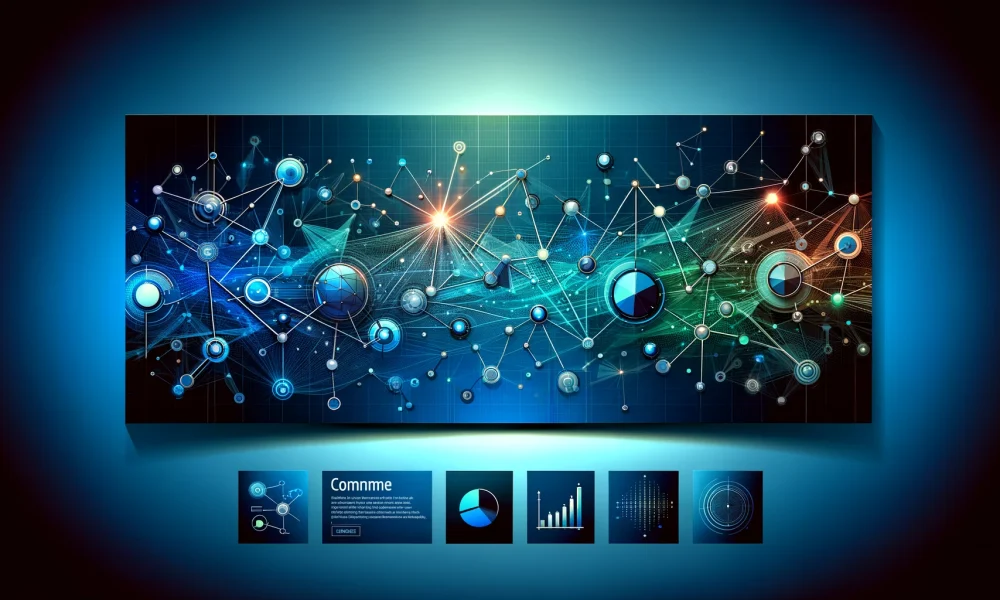In a world driven by data, the need for accurate and efficient search technologies is more crucial than ever. Traditional search engines often fall short when it comes to meeting complex user needs, especially in specialized domains or long-tail queries. Enter Graph RAG (Retrieval-Augmented Generation), a groundbreaking solution that harnesses the power of knowledge graphs and large language models (LLMs) to deliver intelligent, context-aware search results.
This comprehensive guide delves deep into the world of Graph RAG, exploring its origins, underlying principles, and revolutionary advancements in the field of information retrieval. Get ready to embark on a journey that will reshape your understanding of search and unlock new frontiers in intelligent data exploration.
### Revisiting the Basics: The Original RAG Approach
Before diving into the intricacies of Graph RAG, it’s important to revisit the foundations of the Retrieval-Augmented Generation (RAG) technique. RAG enhances existing LLMs with external knowledge, enabling them to provide more relevant and accurate answers to domain-specific queries.
### Limitations of the Original RAG Approach
While RAG has proven effective in various natural language processing tasks, it still faces limitations in dealing with complex queries and specialized domains. Some of the key challenges include lack of contextual understanding, limited knowledge representation, scalability issues, and domain specificity.
### Enter Graph RAG
Graph RAG combines knowledge graphs with LLMs to generate more intelligent and precise search results. By leveraging knowledge graphs, Graph RAG enhances contextual understanding and offers improved reasoning and inference capabilities.
### The Graph RAG Advantage: What Sets It Apart?
Graph RAG offers several advantages over traditional search enhancement techniques. These include enhanced contextual understanding, improved reasoning and inference, scalability and efficiency, domain adaptability, and cost efficiency.
### Demonstrating Graph RAG
Graph RAG’s effectiveness can be seen in comparisons with other techniques like Vector RAG and Text2Cypher. Graph RAG excels in providing comprehensive results, associative searches, and contextual inferences.
### Building Knowledge Graph Applications with NebulaGraph
NebulaGraph simplifies the creation of enterprise-specific KG applications, allowing developers to focus on LLM orchestration logic without complex abstractions. Integrating NebulaGraph with LLM frameworks enables the development of high-quality enterprise-level applications.
### “Graph RAG” vs. “Knowledge Graph RAG”
While the terms are often used interchangeably, they refer to slightly different concepts. Graph RAG is a general approach using knowledge graphs to enhance LLM capabilities, while Knowledge Graph RAG is a more domain-specific implementation.
### Implementing Graph RAG: Strategies and Best Practices
Successful implementation of Graph RAG requires careful planning and adherence to best practices. Key strategies include knowledge graph construction, data integration and enrichment, scalability and performance optimization, LLM integration, user experience, and continuous improvement.
### Integrating Mathematics and Code in Graph RAG
Graph RAG involves representing entities and relationships in a knowledge graph using graph theory concepts. Implementing graph embeddings and retrieval functions are essential steps in integrating knowledge graphs with LLMs.
### Graph RAG in Action: Real-World Examples
Real-world examples demonstrate the impact of Graph RAG across various domains and industries, from biomedical research and drug discovery to legal case analysis, customer service, and scientific literature exploration.
In conclusion, as organizations grapple with increasing data volumes and demand for intelligent search capabilities, Graph RAG emerges as a powerful solution that unlocks new insights, drives innovation, and provides a competitive edge.
1. What is the Power of Graph RAG?
The Power of Graph RAG is a cutting-edge technology that combines graph-based algorithms and natural language processing to provide more intelligent search capabilities.
2. How does the Power of Graph RAG improve search results?
By analyzing relationships between entities in a graph structure, the Power of Graph RAG can better understand the context of search queries and deliver more relevant and accurate results.
3. Can the Power of Graph RAG be integrated with existing search engines?
Yes, the Power of Graph RAG can be seamlessly integrated with existing search engines to enhance their capabilities and improve the overall search experience for users.
4. How does the Power of Graph RAG handle complex search queries?
The advanced algorithms used in the Power of Graph RAG enable it to handle complex search queries by identifying patterns and relationships in the data to provide more nuanced and accurate results.
5. What industries can benefit from the Power of Graph RAG?
The Power of Graph RAG has applications across a wide range of industries, including e-commerce, healthcare, finance, and more. Any industry that relies on accurate and efficient search capabilities can benefit from this technology.
Source link

